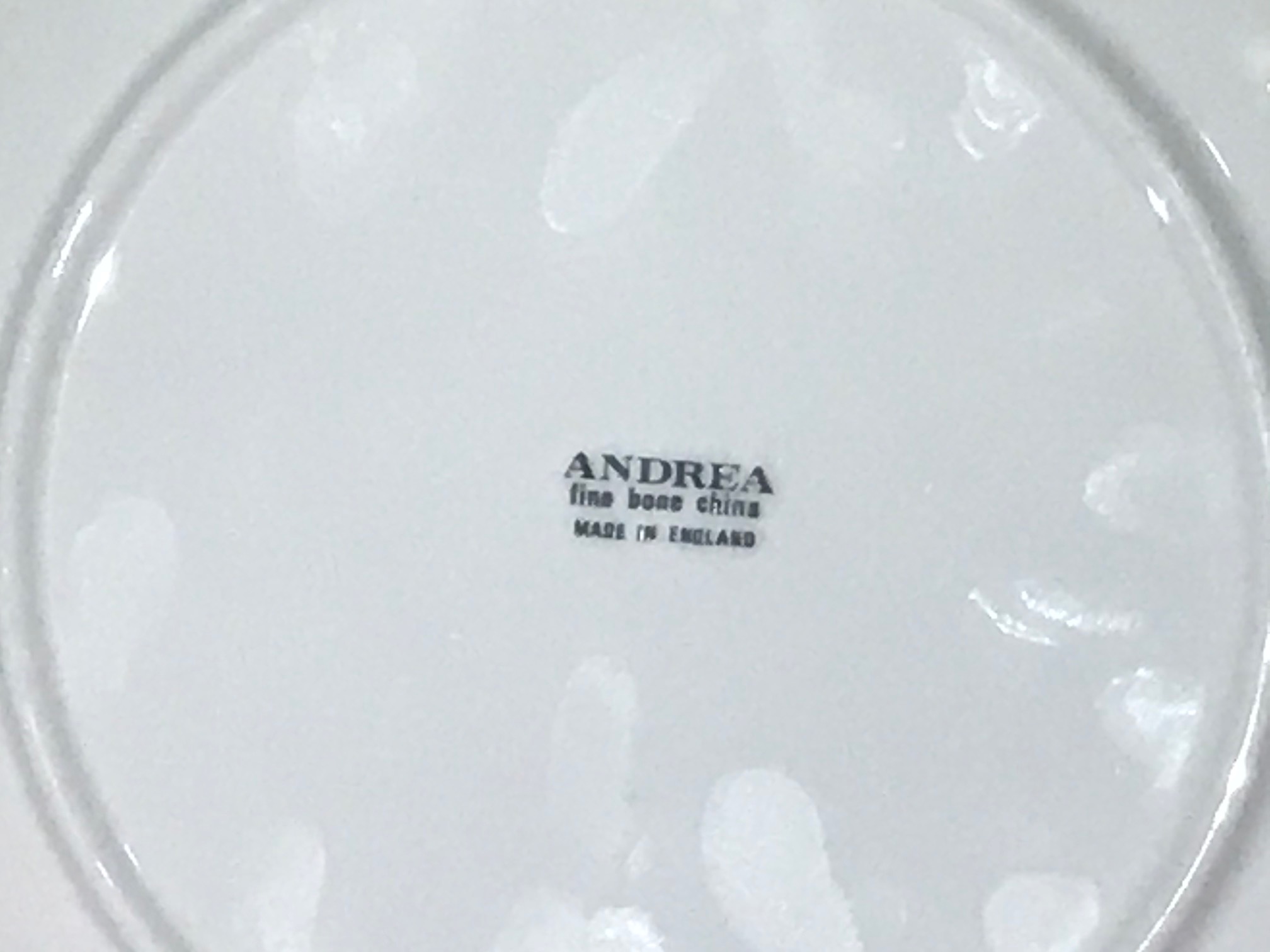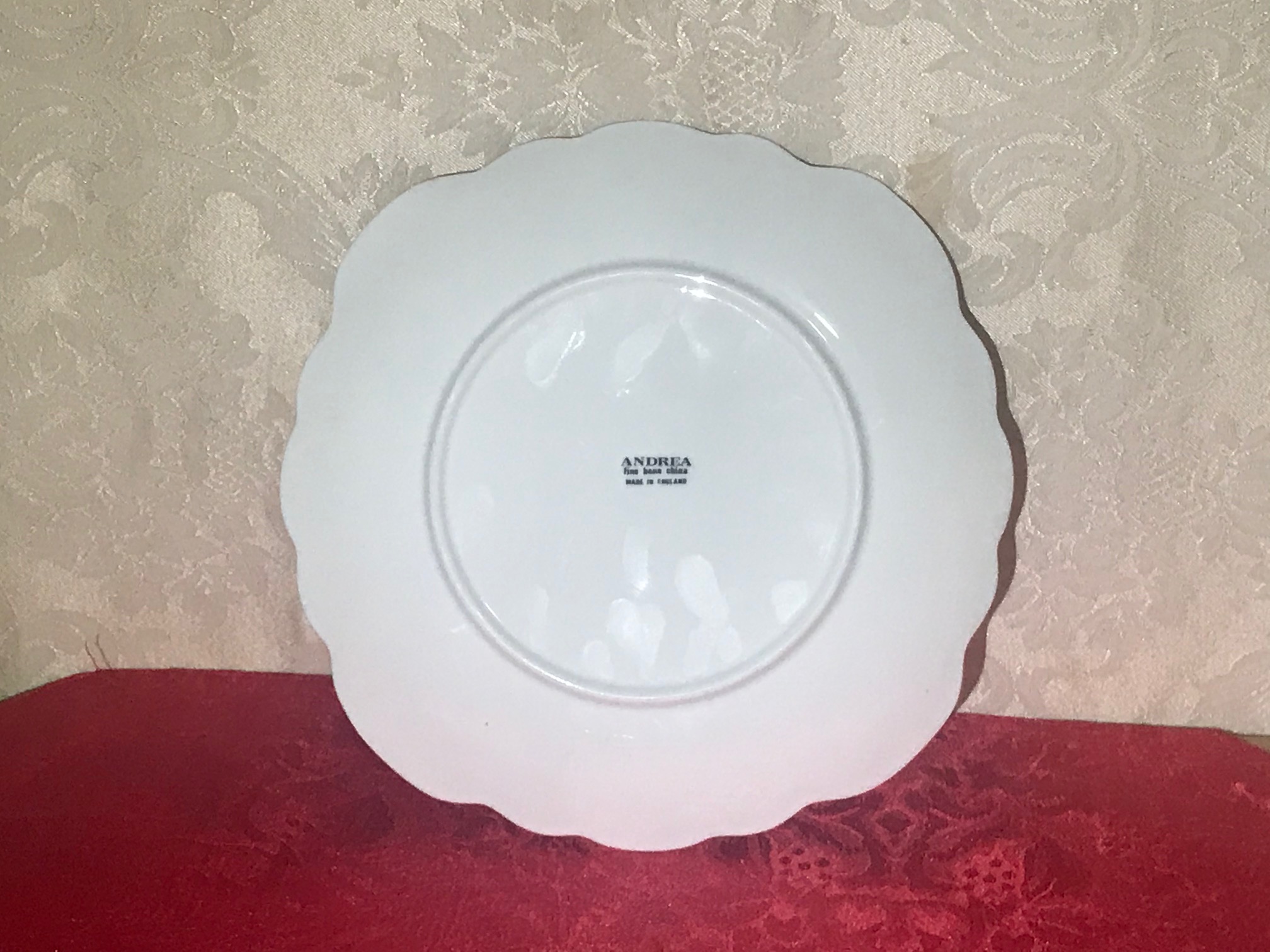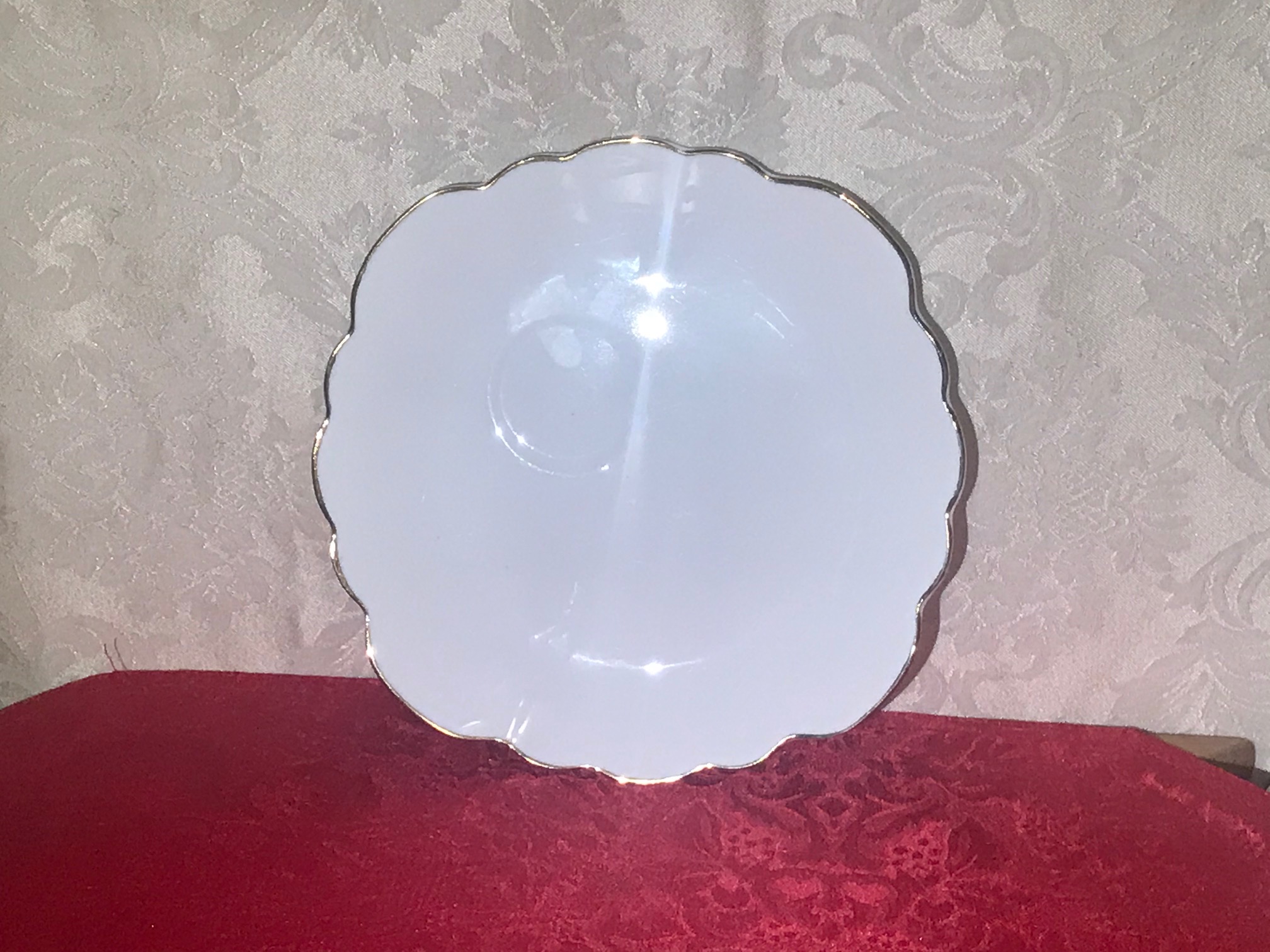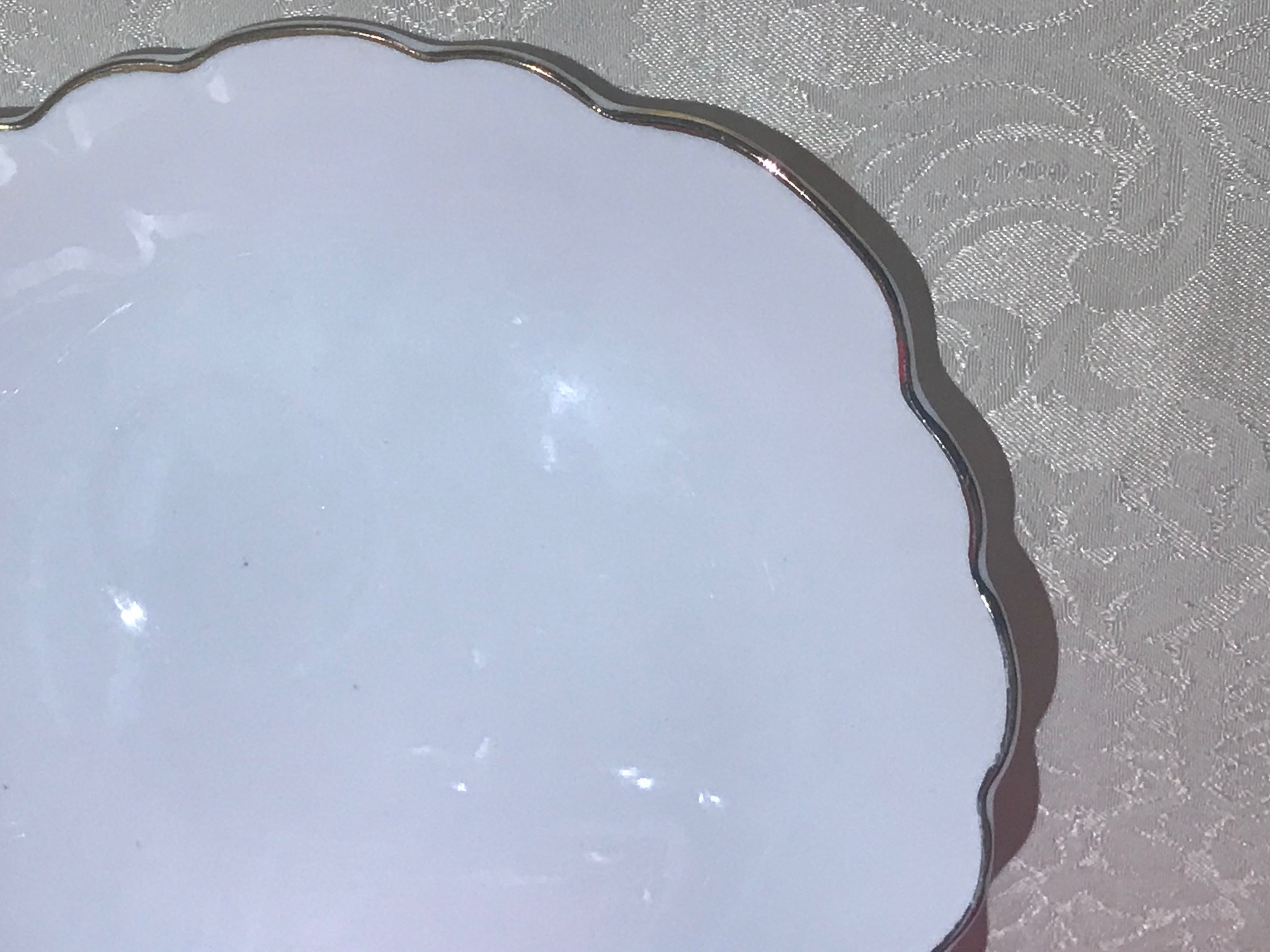Andrea fine bone china “Made In England”: 59,900 ppm Lead on food surface (90 is unsafe in items for kids.)

White Center of Dish (food surface):
- Lead (Pb): 59,900 +/- 1,800 ppm
- Barium (Ba): 212 +/- 96 ppm
- Zinc (Zn): 77 +/- 33 ppm
- Iron (Fe): 1,109 +/- 219 ppm
- Titanium (Ti): 153 +/- 52 ppm
- Note: Gold-colored decorative edge trim had similar Lead readings but also tested positive for Gold (Au) at 1,126 ppm
Back Logo Area of Dish (black)
- Lead (Pb): 68,600 +/- 2,200 ppm
- Barium (Ba): 223 +/- 103 ppm
- Chromium (Cr): 1,097 +/- 138 ppm
- Zinc (Zn): 105 +/- 37 ppm
- Iron (Fe): 6,210 +/- 457 ppm
- Titanium (Ti): 184 +/- 59 ppm
- Cobalt (Co): 2,616 +/- 256 ppm
- Manganese (Mn): 1,114 +/- 334 ppm
XRF testing was done for a minimum of 60 seconds per component, and repeated multiple times to confirm the results. Results are science-based, accurate, and replicable.
How much Lead is “too much” Lead?
The amount of Lead that is considered unsafe – and illegal – in a modern / newly-manufactured item “made and sold for use by children” today is anything 90 ppm Lead or higher in the paint / glaze or coating, and anything 100 ppm Lead or higher in the substrate. Ceramic dishes are not covered by this regulatory standard (even though it is my opinion that they should be — because children obviously use dishes!)
If this dish were manufactured today, with these levels – and (explicitly) sold as “intended for use by children”, it would definitely be considered both unsafe and illegal. If it were manufactured today and sold for use by adults (i.e. not explicitly marketed as “intended for use by children“), it would likely be considered as perfectly safe and legal (as long as it passed a test to determine that the Lead was not leaching above allowable limits at the time of manufacture, under current U.S. Federal regulations)!
As always, thank you for reading and for sharing my posts.
Please let me know if you have any questions.
Tamara Rubin
#LeadSafeMama

Never Miss an Important Article Again!
Join our Email List




